The Saint Louis Zoo WildCare Institute
Did you know the Saint Louis Zoo is a world leader in saving endangered species and their habitats? Many of the animals you will see at the Zoo are threatened in the wild by shrinking habitats, disease and poaching. The need for conservation is greater than ever, with one vertebrate species disappearing from the Earth every day. Ultimately, we need to save the ecosystems on which animals and humans depend.
The Saint Louis Zoo WildCare Institute, with the support of its conservation partners, takes a holistic approach to troubled ecosystems by addressing three key ingredients in conservation success: wildlife management and recovery, conservation science, and support of the human populations that coexist with wildlife.
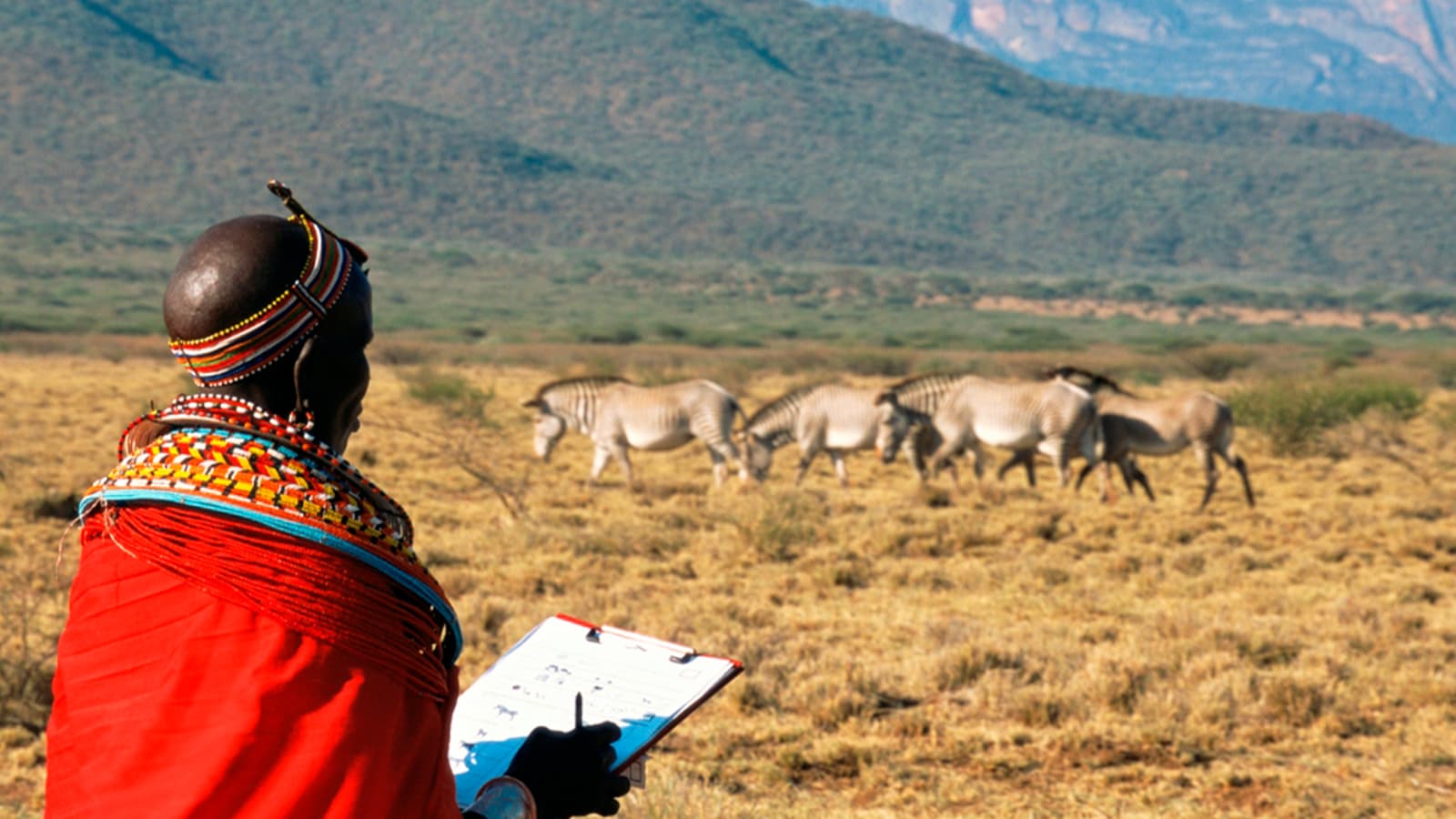
Many Centers. One Goal.
The Saint Louis Zoo WildCare Institute, with the support of its conservation partners, takes a holistic approach to troubled ecosystems by addressing three key ingredients in conservation success: wildlife management and recovery, conservation science, and support of the human populations that coexist with wildlife.
-
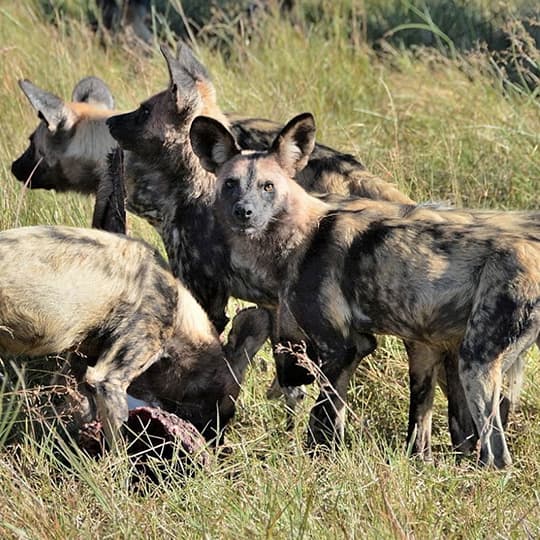 The Botswana Center for African Painted DogsLearn More
The Botswana Center for African Painted DogsLearn MoreAfrican painted dogs are in grave danger. Surveys show that they have lost at least 90% of their historic range and now, only three large viable populations remain in all of Africa.
-
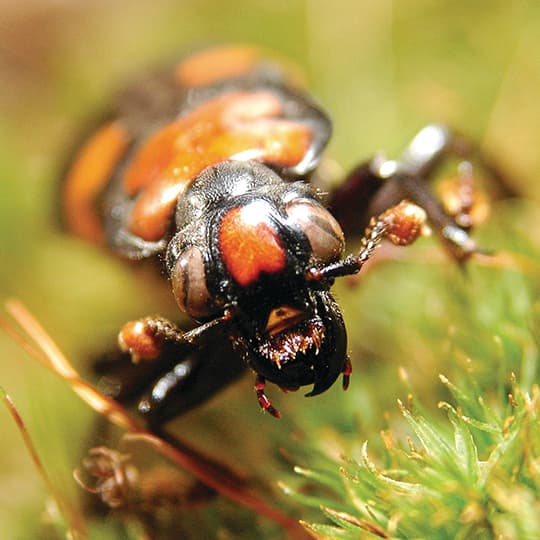 Center for American Burying Beetle ConservationLearn More
Center for American Burying Beetle ConservationLearn MoreThis Center and its partners are reintroducing zoo-bred American burying beetles for the first time ever in Missouri. We are following up on these reintroductions to measure their impact in local ecosystems
-
 Center for Asian Elephant ConservationLearn More
Center for Asian Elephant ConservationLearn MoreThe wild Asian elephant population is threatened by habitat loss, fragmentation, human-elephant conflict, and poaching for its ivory, skin, and meat.
-
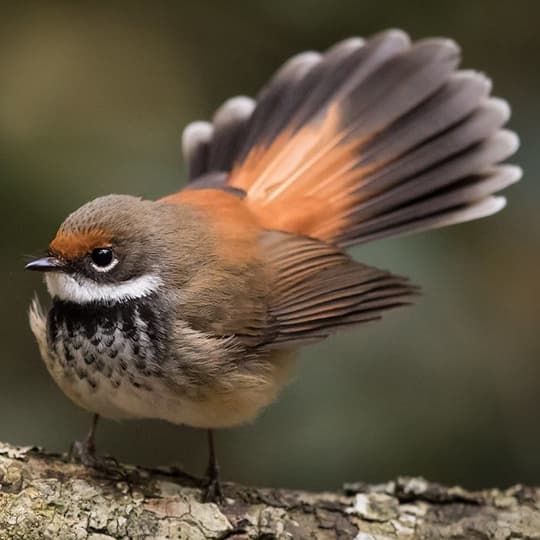 Center for Avian Conservation in the Pacific IslandsLearn More
Center for Avian Conservation in the Pacific IslandsLearn MoreThe efforts by the Saint Louis Zoo to save Pacific Island avian species began in 1994 when the Zoo joined forces with other organizations to form a group called the Pacific Bird Conservation Project.
-
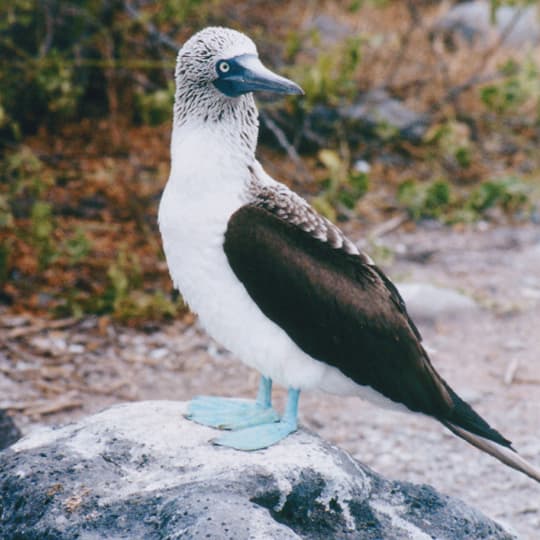 Center for Avian Health in the Galapagos IslandsLearn More
Center for Avian Health in the Galapagos IslandsLearn MoreThis Center studies the health of the unique birds in the Galapagos to prevent their extinction from diseases and trains Ecuadorian scientists and rangers to recognize and test for diseases.
-
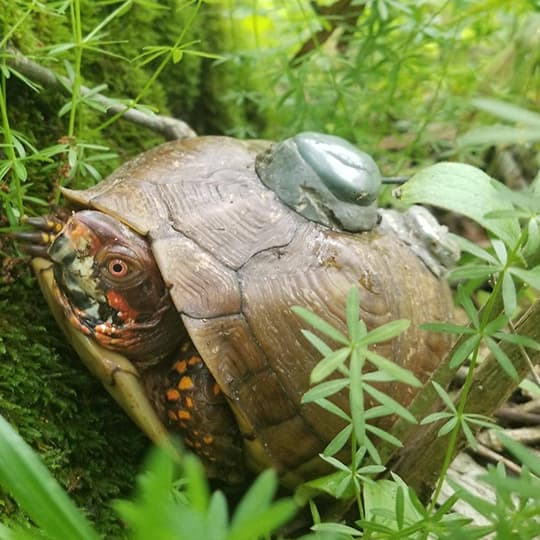 Center for Chelonian ConservationLearn More
Center for Chelonian ConservationLearn MoreChelonians are threatened by habitat loss and fragmentation, the legal and illegal trade in wildlife, pollution, and infectious diseases.
-
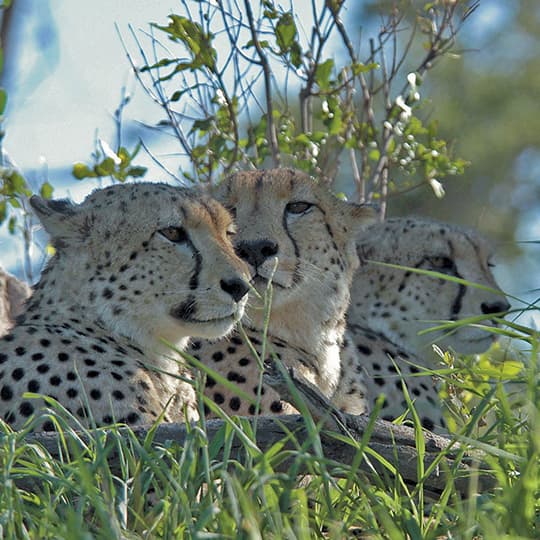 Center for Conservation of Carnivores in AfricaLearn More
Center for Conservation of Carnivores in AfricaLearn MoreThis Center helps survey the health and numbers of wild cheetahs and other large carnivores. It also works to reduce conflicts between wildlife and livestock by teaching ranchers how to co-exist with these important predators.
-
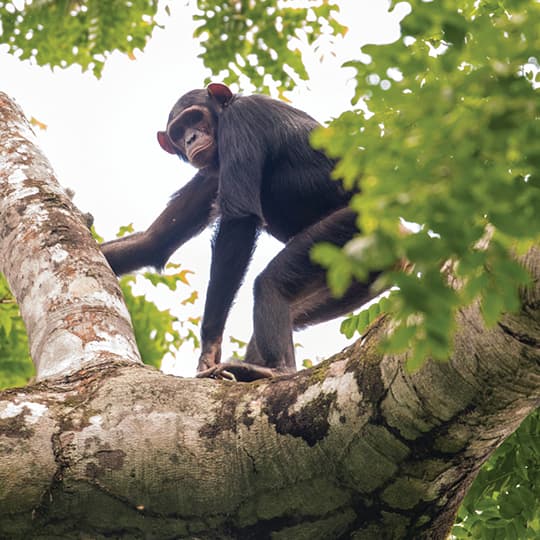 Center for the Conservation
Center for the Conservation
of Congo ApesLearn MoreThe goal of this Center is to develop conservation policies and local leadership to ensure the long-term survival of chimpanzees and gorillas in the Congo Basin.
-
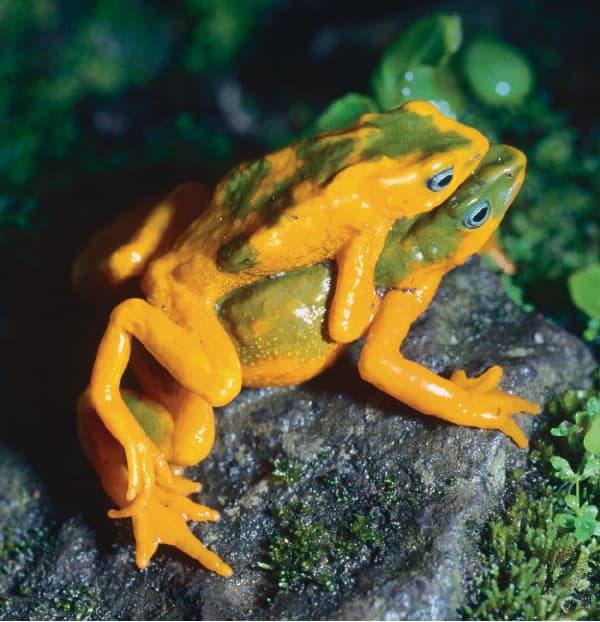 Center for Conservation of Ecuadorian HerpetofaunaLearn More
Center for Conservation of Ecuadorian HerpetofaunaLearn MoreThe goal of this Center is to support Fundacion Jambatu's mission of conserving amphibians through the implementation of the Strategic Plan for the Conservation of the Ecuadorian Amphibians in Extinction Risk.
-
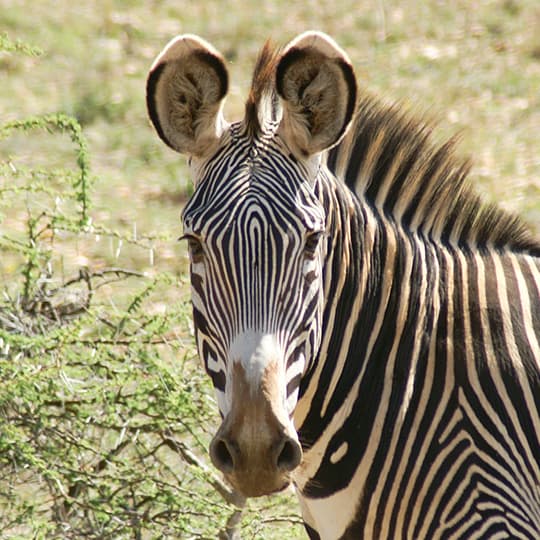 Center for Conservation in the Horn of AfricaLearn More
Center for Conservation in the Horn of AfricaLearn MoreThis Center helps raise awareness and support for the wildlife of the Horn of Africa - through cooperative ex situ conservation, research and education programs.
-
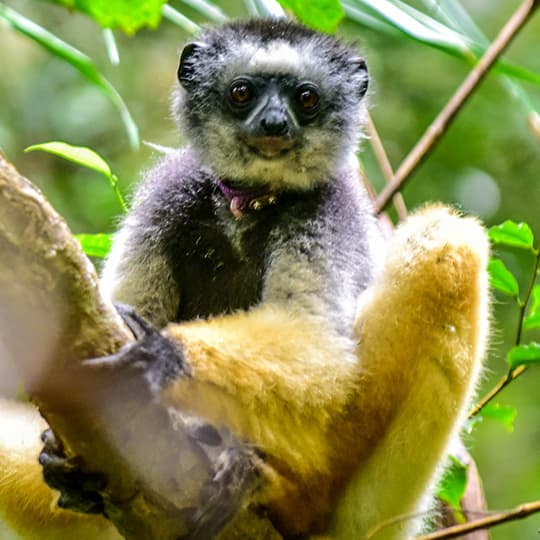 Center for Conservation in MadagascarLearn More
Center for Conservation in MadagascarLearn MoreThis Center’s primary goal is to reduce direct pressures on Madagascar’s threatened and endangered species. The Center involves local rangers in the protection of the wildlife populations. Working with the local communities is a central focus.
-
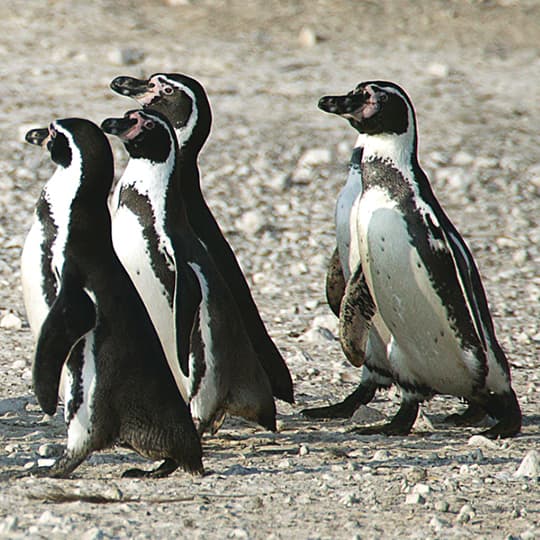 Center for Conservation in
Center for Conservation in
Punta San Juan, PeruLearn MoreThis Center is working to protect Humboldt penguins by establishing a breeding reserve for them, supporting biological studies and raising awareness of marine conservation issues.
-
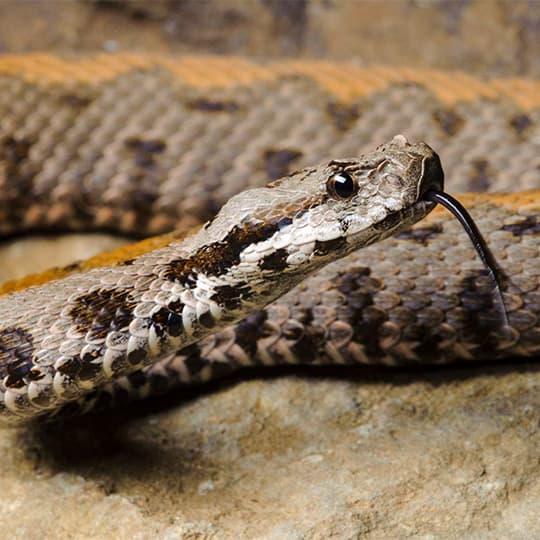 Center for Conservation in
Center for Conservation in
Western AsiaLearn MoreThis Center is focused on conserving a number of species found nowhere else, including the Caucasian leopard, black grouse, Bezoar goat, Armenian mouflon, Kaiser’s spotted newt and multiple species of mountain and shield-headed vipers.
-
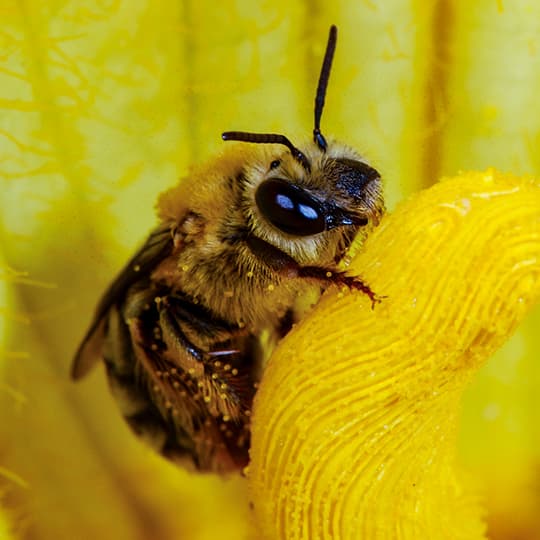 Center for Native Pollinator ConservationLearn More
Center for Native Pollinator ConservationLearn MoreThis Center focuses on the importance and diversity of native pollinators, especially native bees, for the maintenance and survival of wildlife, ecosystems and agriculture.
-
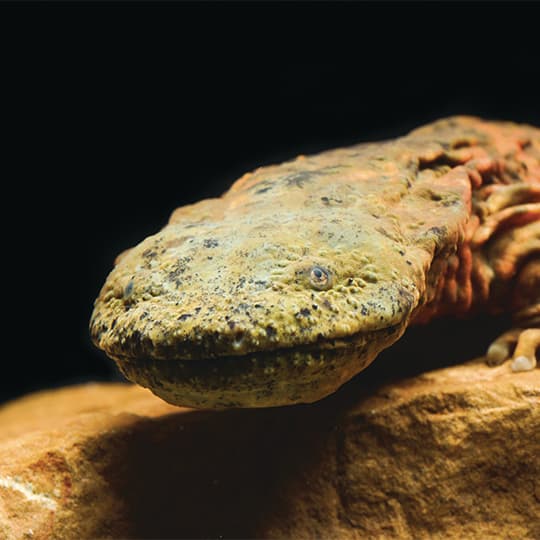 Ron and Karen Goellner Center for
Ron and Karen Goellner Center for
Hellbender ConservationLearn MoreThis Center, working with the Missouri Department of Conservation, breeds Ozark hellbenders in human care—a first for either of the two subspecies of hellbender (Ozark and eastern hellbenders).
-
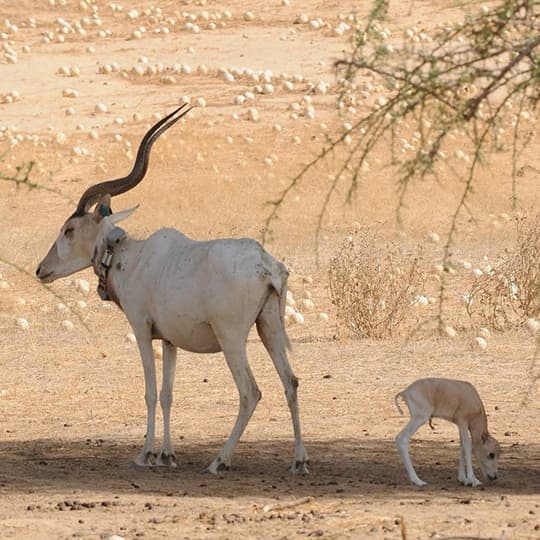 Saharan Wildlife Recovery CenterLearn More
Saharan Wildlife Recovery CenterLearn MoreThis Center works to bring attention to the plight of Sahelo-Saharan wildlife and pursues sustainable solutions to address the decline of critically endangered addax and other species.
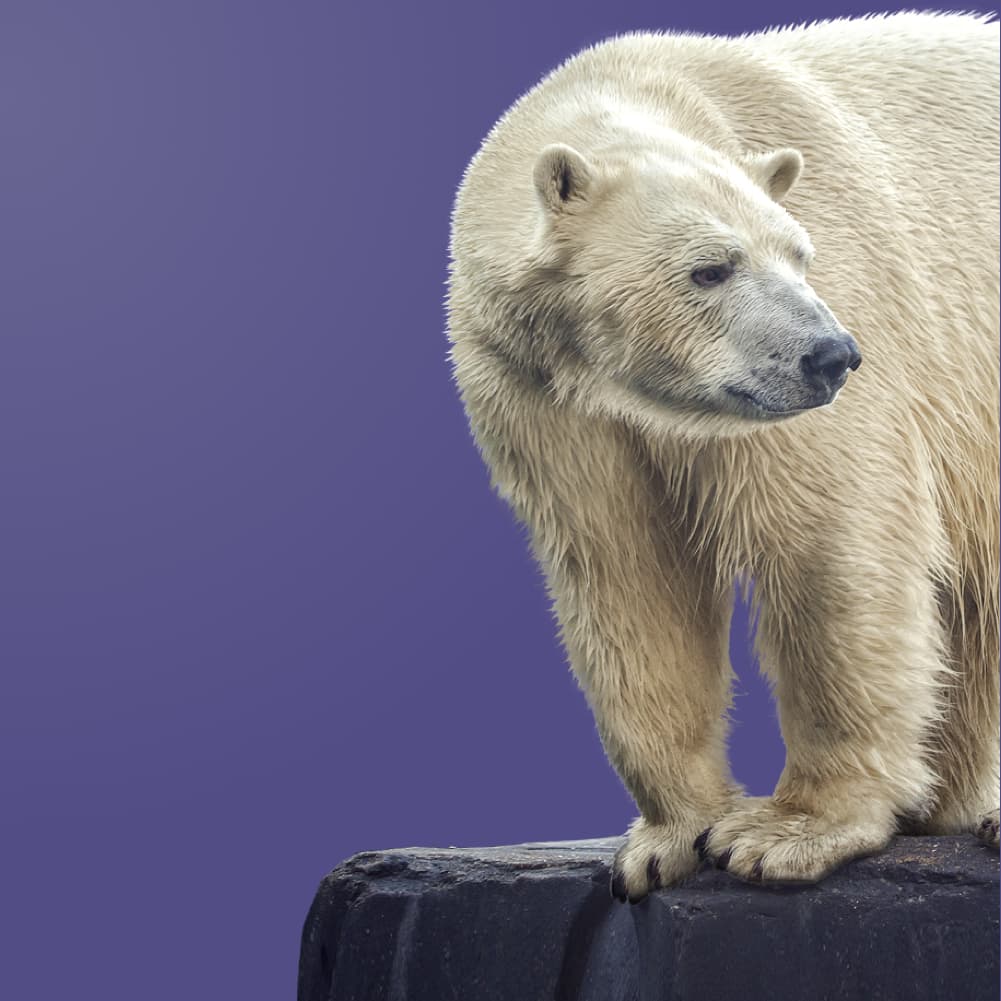
And we support other conservation programs
Explore what we’re doing and how you can help below.
These programs support threatened or endangered species all over the globe.
Indonesia is one of the world's biodiversity hotspots and three of its iconic species—anoa, babirusa and banteng— are threatened with extinction. The WildCare Institute supports Action Indonesia, which was created in 2016 to ensure the long-term survival of these imperiled species through a combination of ex situ (protecting species outside of natural habitats) and in situ (protecting species in natural habitats) activities. Action Indonesia formed the first ungulate Global Species Management Plans and is utilizing this unique framework to take meaningful steps to conserve these unique species.
Andean bears are an important flagship species for the unique and fragile Tropical Andes ecosystem, the richest and most biologically diverse region on Earth. Currently listed as vulnerable, the species faces a number of threats, including habitat reduction and fragmentation, and high mortality caused by anthropogenic factors.
To address these threats the Andean Bear Conservation Alliance (ABCA) was established in 2011and The Saint Louis Zoo WildCare Institute has been a supporter of ABCA since 2012. ABCA works to tackle conservation threats using a multifaceted approach, including field research to understand bear ecology and distribution. It also uses engagement of local protected area management to establish and scale conservation plans on population monitoring and capacity-building projects. An early focus of ABCA was on designing, testing and refining tools that accurately evaluate the distribution and status of the remaining Andean bear populations. Tools developed by ABCA are now used by different government and nongovernment organizations throughout the Andean bear’s range. Also, a Monitoring Program Development Workshop, partially funded by ABCA, was held in July 2017 at Chingaza National Park. Its focus was the development of an Andean Bear Conservation Strategy for the Occidental Mountain Range of Colombia. In 2019 the St Louis Zoo was a supporting partner in the successful application for the AZA Andean Bear SAFE program which works to consolidate and focus the conservation efforts by accredited zoos for this species. In addition, the Andean Bear SSP Coordinator and Studbook keeper positions for the AZA population are held by St Louis Zoo staff.
As part of the Arctic Socio-Environmental Initiative, the Zoo has partnered with six Alaska Native villages to work toward a common goal of climate change mitigation and polar bear conservation. Alaska Native communities have extensive, direct and relevant experience, not only with polar bears, but also with the impacts of a changing climate and ecosystem. Because of this, Alaska Native people are the leading voice at the Zoo's McDonnell Polar Bear Point exhibit featuring ground-breaking "first voices" interpretation. In 2017, a second video premiered from the Native Village of Gambell. Learn more at stlzoo.org/alaska.
As part of the partnership, Zoo staff regularly travels to villages in Alaska to provide STEM (Science, Technology, Engineering and Math) and conservation-based educational programming. The Zoo also offers free distance learning programs with the villages to stay connected as much as possible throughout the year. The Zoo works with the U.S. Fish and Wildlife Service to learn more about the status of Alaska's polar bears and polar bear research.
Southeast Asia is home to a large number of turtle species, many of which are found nowhere else. As a result, this region is a hotspot of turtle diversity. Sadly, over 80 percent of Asia's turtle species are now threatened with extinction. Unsustainable collection of wild turtles for food, medicine and pets has caused the decline of many Asian species. Habitat loss, pollution and other threats also affect turtles in Asia. The critical situation for these species has been a major factor in turtles becoming one of the world's most threatened groups of vertebrates.
Although the future is still uncertain for many species, there is hope. Many dedicated organizations are working to save Asian turtles, including the Saint Louis Zoo. Since 2009, the Saint Louis Zoo WildCare Institute has helped fund the Turtle Survival Alliance (TSA). The TSA works globally to protect threatened turtles by restoring wild populations; creating sustainable, conservation breeding colonies; and supporting local communities. The TSA's conservation efforts in Southeast Asia include projects in Cambodia, China, Indonesia, Myanmar and Vietnam.
In 2019, the WildCare Institute furthered its commitment to Asian turtle conservation by establishing the Asian Turtle Conservation Program. This initiative provides continued support to the TSA and magnifies the Zoo's conservation impact by partnering with the Asian Turtle Program (ATP). Established in 1998, the ATP performs field surveys, law enforcement training, student training, community awareness and site-based conservation action in Vietnam. The ATP also operates the Turtle Conservation Centre, a rescue and breeding facility for threatened species in Vietnam.
These actions by the WildCare Institute complement efforts in the care and research of Asian turtles at the Zoo's Charles H. Hoessle Herpetarium. The Saint Louis Zoo was the first zoo in the U.S. to breed the McCord's box turtle, as well as the first U.S. zoo to house the giant Asian narrow-headed softshell turtle. Currently, Saint Louis Zoo staff lead five Species Survival Plans for Asian turtles through the Association of Zoos and Aquariums and collaborate on field research of the black-breasted leaf turtle in China. The Zoo's conservation efforts, both here and abroad, is helping to improve the outlook for Asian turtles.
Crocodiles are often identified as indicators of ecosystem health. They are both apex predators (animals at the top of the food chain with no natural predators) and habitat engineers (organisms that create, modify or maintain habitats).
In Cuba, there are two species of crocodiles: the critically endangered Cuban crocodile and the American crocodile. Cuban crocodiles only exist in the Zapata Swamp in the Matanzas province and in the Lanier Swamp on the Isle of Youth off the southern coast of Cuba. Current threats to both species include climate change, illegal hunting, habitat loss and hybridization (breeding between the two species).
The Cuban crocodile is arguably the most morphologically (form and structure of organisms), ecologically and behaviorally distinct species of crocodile in the world and has the smallest known range of any living crocodilian.
Since the early 1960s, the Zapata Crocodile Farm (ZCF) has managed breeding groups of crocodiles. Today they manage a genetically pure breeding group of Cuban crocodiles for reintroductions back into protected areas of the Zapata Swamp.
There are approximately 4,000 Cuban crocodiles at the ZCF and staff has been successfully breeding this species for decades. Like most reptile species, Cuban crocodiles are under-studied, and there have been no health studies of captive or free-living crocodiles in Cuba. Research to understand the health of this species, including infectious disease and nutrition, is important when it comes to managing captive populations and releasing captive crocodiles back into their historic range.
Beginning in 2018, in part due to the Association of Zoos and Aquariums’ Conservation Grant Fund, a team comprised of staff from four U.S. zoos, led by the Saint Louis Zoo, conducted the first health assessment of crocodiles at the ZCF.
In 2019, the Saint Louis Zoo WildCare Institute developed the Crocodile Research and Conservation in Cuba Program. This program helps support the conservation efforts of the dedicated and passionate Cuban biologists who have been working on conserving crocodiles for decades. A collaborative effort led by Saint Louis Zoo Herpetology Department and the Saint Louis Zoo Institute for Conservation Medicine is taking a One Health approach to Cuban crocodile conservation by investigating the health of crocodiles and their environment, which they share with the Cuban people. (One Health recognizes that the health of people is connected to the health of animals and the environment.)
This program is in collaboration with the Wildlife Conservation Society Bronx Zoo, the Smithsonian’s National Zoological Park and Cameron Park Zoo.
Many North American songbird populations are in drastic decline. In fact, it is estimated that we have lost approximately 2.9 billion songbirds throughout the U.S. and Canada since 1970.
The North American Songbird Program seeks to raise awareness of the threats to songbirds, such as building collisions, free-roaming cats and light pollution. The Saint Louis Zoo is also a North American Songbird SAFE (Saving Animals From Extinction) program partner. The SAFE program harnesses the collective expertise of zoos and their resources to save species and promote conservation efforts.
HUTAN, a French NGO created by Drs. Marc Ancrenaz and Isabelle Lackman, has been operating in Sabah, a Malaysian state in the northern part of Borneo, since 1998. Their primary area of operation is the lower Kinabatangan floodplain, a biodiversity hotspot, harboring a remarkable diversity of wildlife including iconic species such as the Bornean orangutan, proboscis monkey, Bornean gibbon, Bornean elephant, clouded leopard, sun bear, eight species of hornbills, and a wide array of primates, birds, and other amazing animal and plant life. HUTAN staff operate in many projects, including the orangutan research unit, elephant and hornbill conservation teams, swiftlet recovery group, reforestation unit, wildlife survey and protection teams, and environmental education programs; all of which research and conserve wildlife, and work with people and industries to foster peaceful sharing of the habitats. The Saint Louis Zoo WildCare Institute began supporting HUTAN in 2005 with the opening of the Donn and Marilyn Lipton Fragile Forest at the Saint Louis Zoo. The Zoo provides integral core program support, plus funding to help with primate surveys and monitoring orangutan corridor use including by bridges over manmade tributaries of the Kinabatangan River.
Endemic to the Democratic Republic of the Congo, the okapi is an elusive relative of the giraffe. Even today, the okapi largely remains a mystery to the outside world. For 27 years, the Zoo and the WildCare Institute have been dedicated to the care of okapi in zoos and in the wild. For okapi in human care, the Zoo has long been an active participant in the Association of Zoos and Aquariums Okapi Species Survival Plan. For okapi in the wild, the WildCare Institute supports the Okapi Conservation Project. Initiated in 1987, the Okapi Conservation Project works to secure a protected area for okapi in one of the most biologically diverse places on Earth, the Ituri Forest. It also supports local communities by training and equipping wildlife guards, providing community assistance (clean water, medical services, school supplies, etc.) to the people living next to the reserve, and offering conservation education.
Each year, the WildCare Institute sponsors World Okapi Day celebrations in St. Louis and in the Democratic Republic of the Congo. At the Zoo, keepers share okapi conservation messages with visitors, while in Africa, educational programming and 10K World Okapi Day races are sponsored in five different villages within the okapi's range. The WildCare Institute sponsors the community of Niania, while other international zoos sponsor races in Epulu, Mambasa, Wamba and Mungbere. Thanks to the World Okapi Day events, an estimated 15,000 children and adults participate across the four territories each year. This World Okapi Day community celebration is an innovative way to create lasting excitement for protecting the wild okapi.
Partula snails once populated the South Pacific Islands, from Palau to the Society Islands, including Tahiti and Moorea. These snails, however, experienced a devastating decline when the predatory rosy wolf snails (Euglandina rosea) were introduced to the islands in the 1970s as a form of biological control. In the 1980s, scientists began to notice the rapid decline of Partula snails and zoos began to create ex situ (protecting a species outside its natural habitat) assurance populations. In 1990, the Zoo initiated the Partula Species Survival Plan (SSP) to manage the Partula populations on a national scale, and Zoo staff coordinated the plan until 2006. Since 2012, both the species coordinator for the Partula SSP and the regional studbook coordinator have been Zoo staff. The Zoo also works closely with the International Partula Programme Conservation (IPPC), coordinated by the Zoological Society of London, which is involved in breeding programs for 25 15 Partula species in 156 zoos, together with field work in the species range. Through this cooperative effort, the WildCare Institute has provided funding for staff, equipment for field surveys, the construction and monitoring of predator exclusion reserves, and reintroduction efforts. In 2015, the Zoo sent 140 individual snails to the London Zoo, where the snails received a thorough health screening before being reintroduced in Tahiti. In 2017 and 2019, Zoo Invertebrate Keepers Glenn Frei and Renee Hazen went to Tahiti to assist in the reintroduction of additional zoo-raised snails and to conduct surveys with the IPPC field researcher.
Concerned about the rising threats to polar bears in the wild, the WildCare Institute has forged a partnership with Polar Bears International (PBI)—a non-profit organization dedicated to the worldwide conservation of the polar bear and its habitat. The WildCare Institute supports a PBI maternal den study conducted by scientists in Svalbard, Norway to document the denning behavior of polar bear mothers that are choosing to den on land, possibly sensing that the sea ice is too unstable for their dens. PBI scientists are observing bear mothers and cubs to determine when they emerge from their dens, how long the families remain at the den sites before heading to the sea ice to hunt seals, and how sensitive they are to disturbances. Study results help wildlife managers and governing authorities develop plans to protect and preserve polar bears for future generations.
Since 2010, the WildCare Institute provided over $100,000 toward polar bear conservation efforts.
The Tasmanian devil was once common throughout the island state of Tasmania; however, the species has experienced a rapid decline since the 1990s due to a rare disease that has spread throughout the population. Unique to Tasmanian devils, devil facial tumor disease is a contagious and fatal cancer that is spread through direct contact during social feeding encounters and mating. The disease produces tumors in and around the devil's mouth and neck. As the tumors multiply and grow, the infected animals become unable to eat and die. The Save the Tasmanian Devil Program (STDP) was established in 2003 by the Tasmanian government in response to the rapid decline of the Tasmanian devil population. The STDP has since joined forces with universities and zoos worldwide in their effort to halt the effects of this disease. The STDP has created three distinct stages in their efforts to save the devil: 1) understand the disease, 2) establish an ex situ (protecting a species outside its natural habitat) population under human care and 3) initiate a Wild Devil Recovery Program. The WildCare Institute has provided financial support to the STDP since 2015. In addition, the Zoo has had ambassador devils in its care since 2016. These charismatic ambassadors help raise awareness about the challenges facing wild Tasmanian devils. Volunteers are stationed at the Tasmanian devil exhibit to interpret the natural history of the Tasmanian devil and educate visitors about the challenges devils face in the wild. These interactions provide the perfect opportunity to promote the work the STDP is doing to ensure the devil's future in the wild.
WildCare Institute Report
Click here to view the 2022 annual report, featuring our top stories and accomplishments for the year.
You Can Make a Difference
To learn more about the Saint Louis Zoo WildCare Institute, contact:
Elizabeth (Lisa) Kelley
Executive Director, WildCare Institute
(314) 646-4958
Lkelley@stlzoo.org
For media information, contact:
Billy Brennan
Director, Public Relations & Government Affairs, Saint Louis Zoo
(314) 646-4633
Brennan@stlzoo.org
For information on donations, contact:
Kim Lovings
(314) 646-4691
Donation@stlzoo.org

